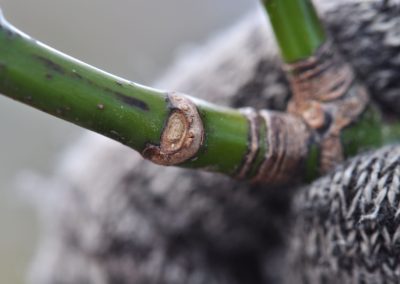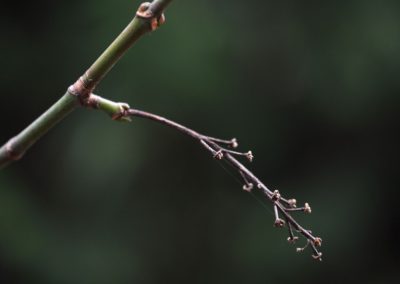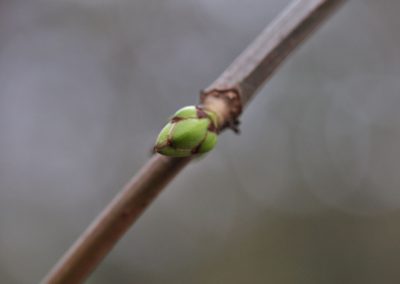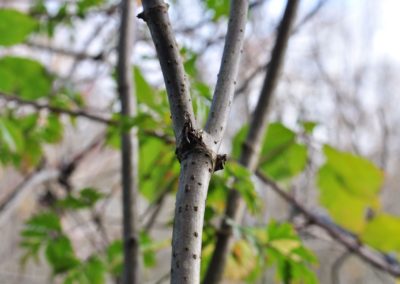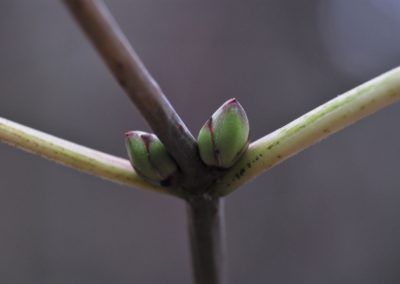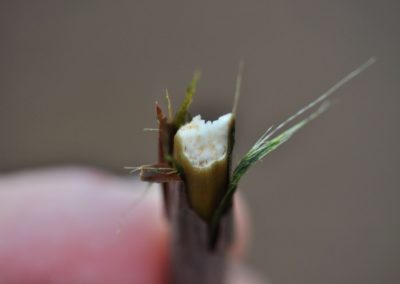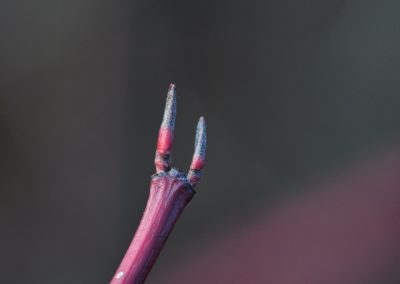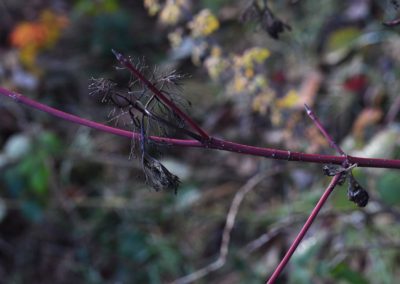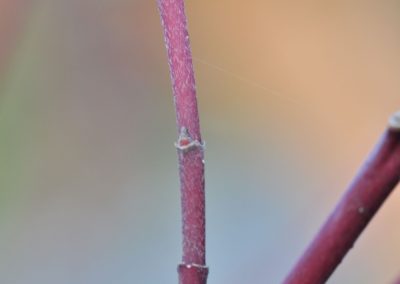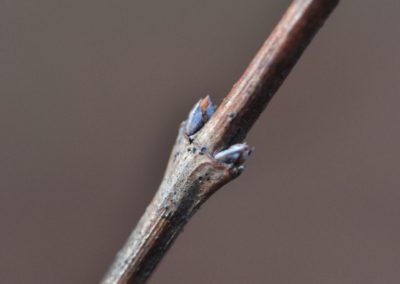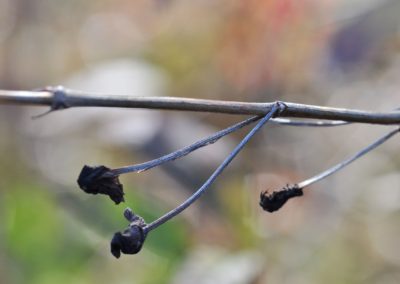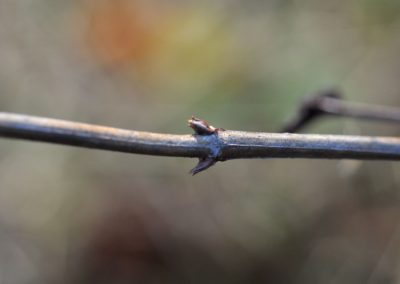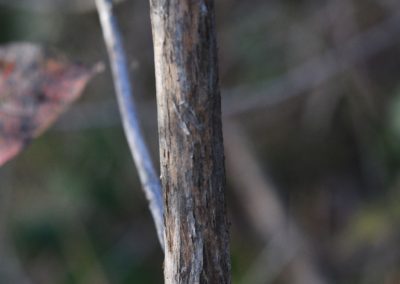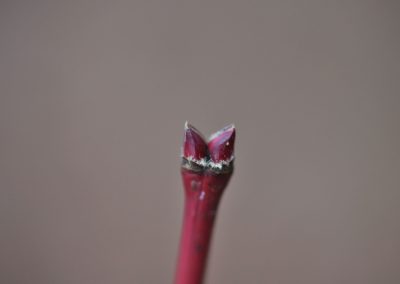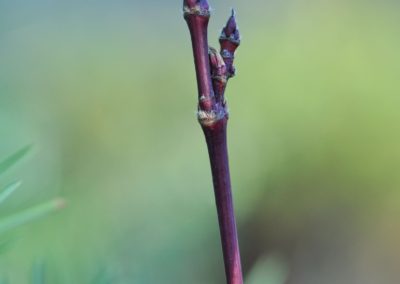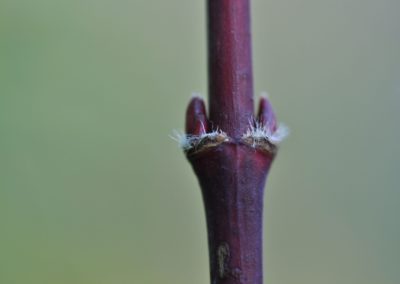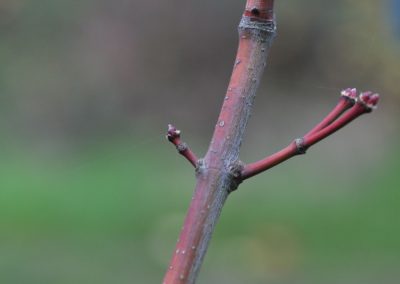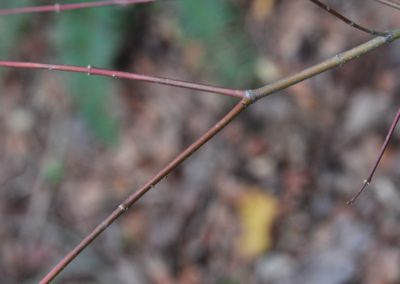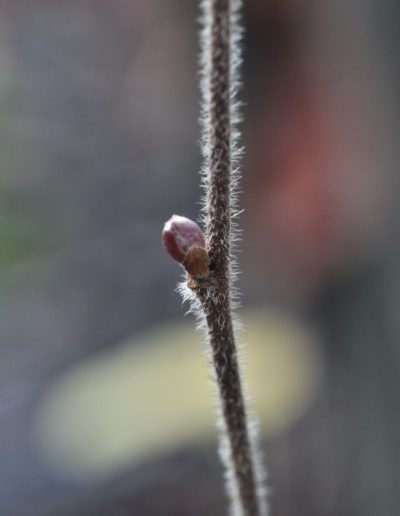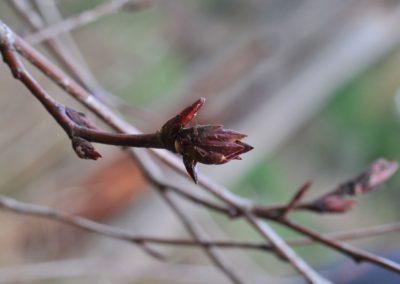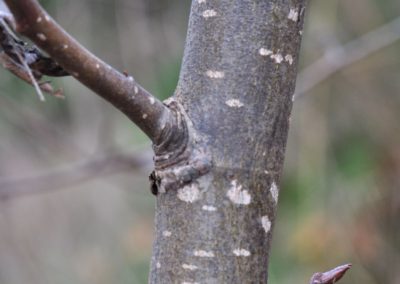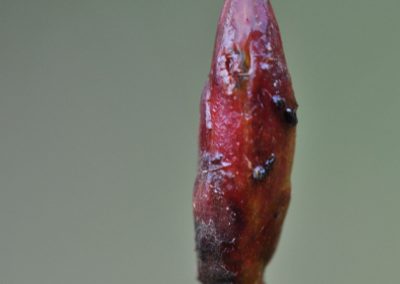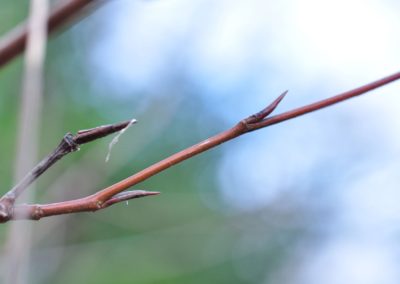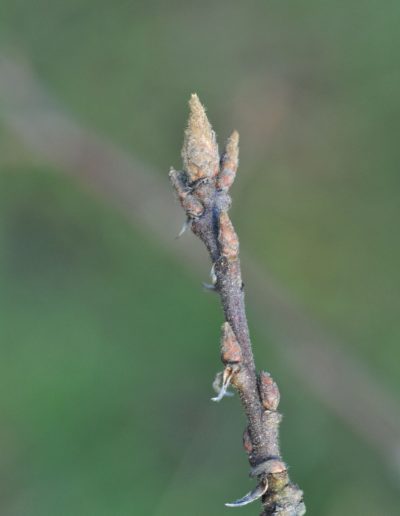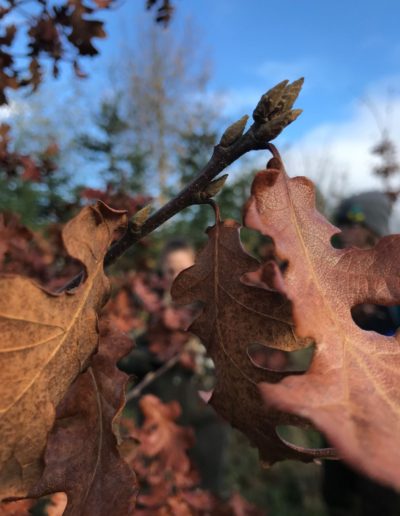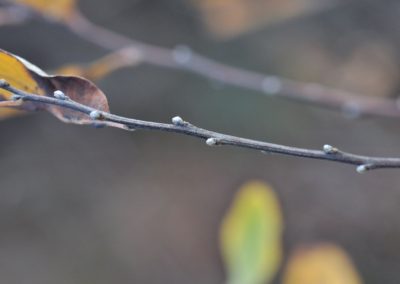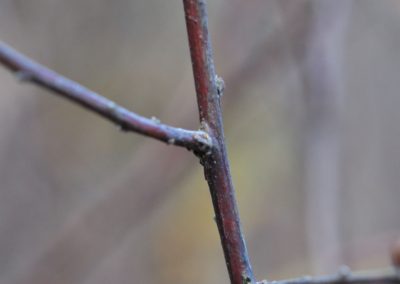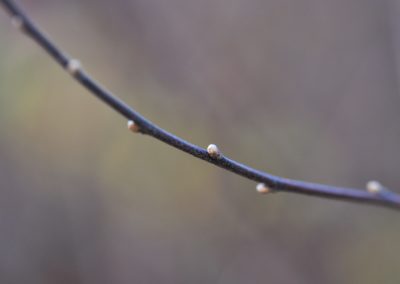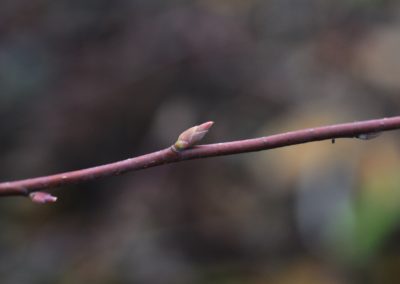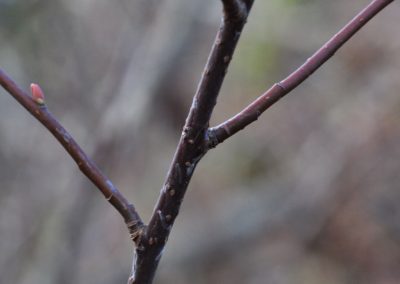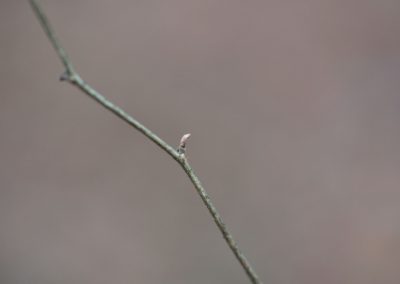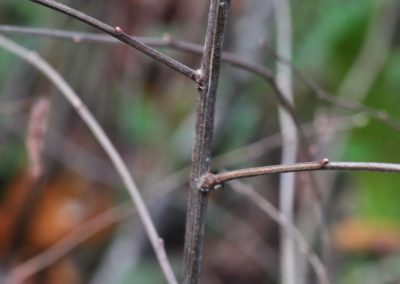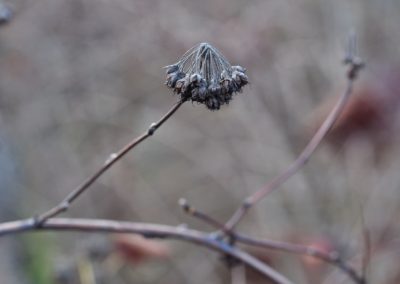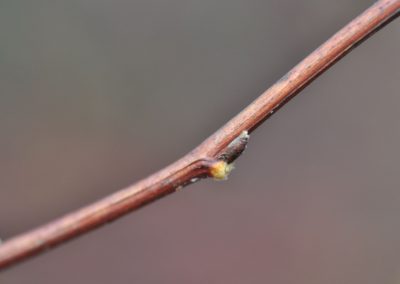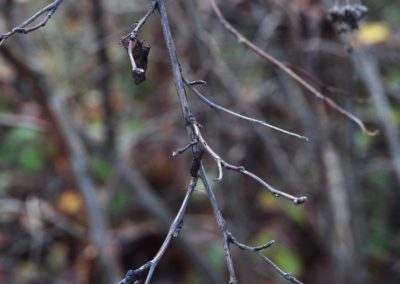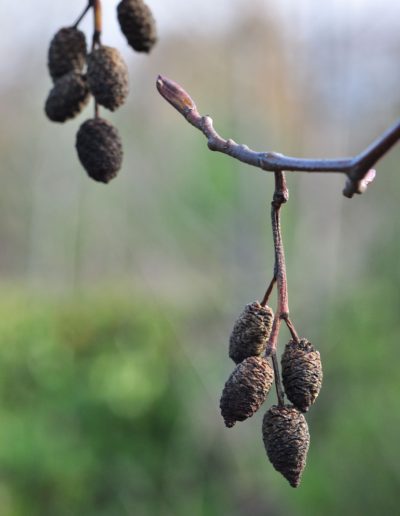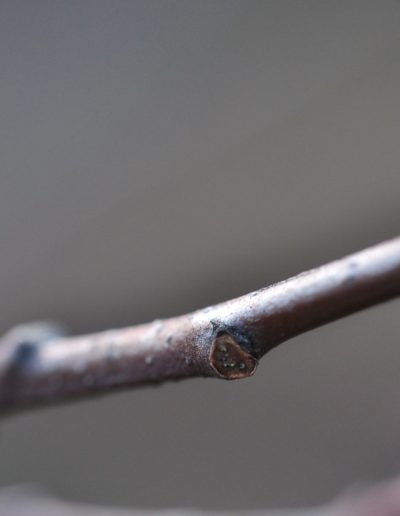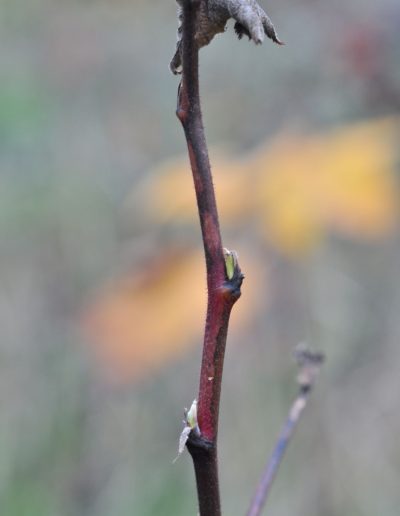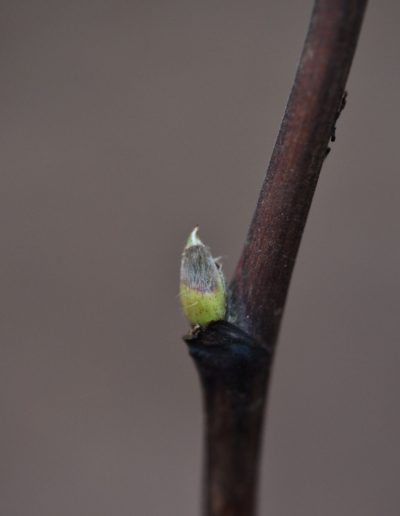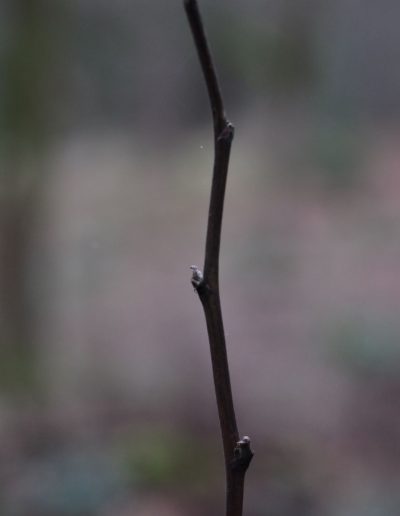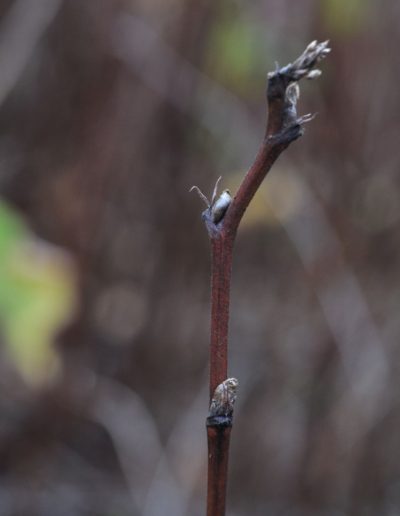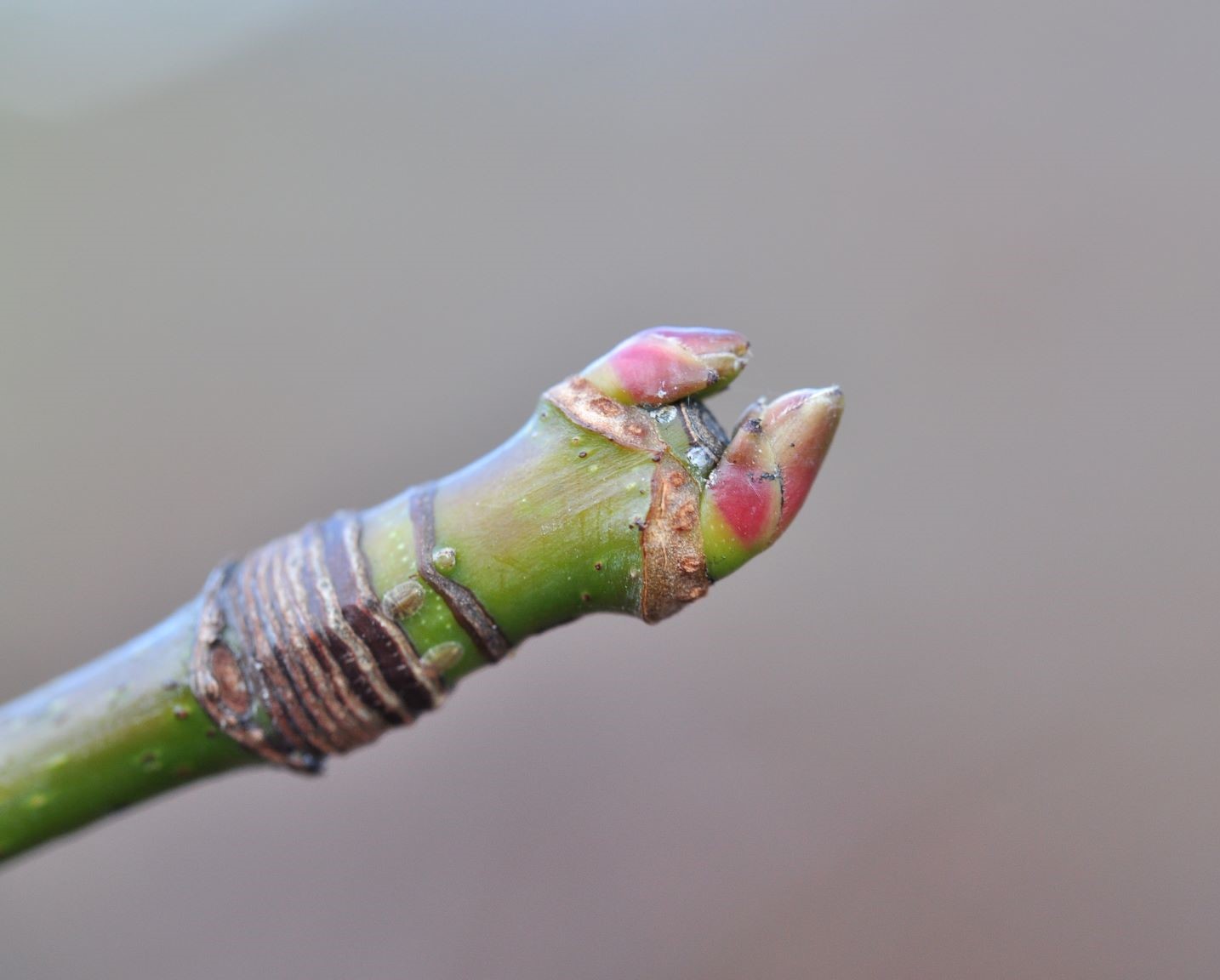
Bigleaf Maple (Acer macrophyllum) buds
Getting to know the parts of a twig
Terminal Bud: The bud that forms at the end of the twig, after a full year of growth.
Lateral Buds: The other buds along the length of the twig.
Pseudo-terminal Bud: A lateral bud at the end of a twig where the branch has broken or died. It can be distinguished from a terminal bud by the presence of a leaf scar (see below).
Bud Scales: Pseudo-leaves that protect the vascular tissue inside the bud.
Lenticels: Dot-like pores that allow for gas exchange. Depending on the plant, these may or may not be visible.
Leaf Scar: A structure below the bud where the previous year’s leaf was attached.
Bundle Scar: Markings inside the leaf scar from where the veins of the previous leaf were connected to the twig.
Ring Scar: The scar from the previous year’s terminal bud.
Node: The location on the stem where buds and leaves attach.
Internode: The space between two nodes.
Pith: The soft tissue in the center of the twig.
Branching Structure
Opposite: Pairs of buds or leaves occur at each node
Alternate: Each node has only one bud or leaf. Plants can also have sub-alternate branching when there is an uneven spacing between nodes (see Hardhack below).
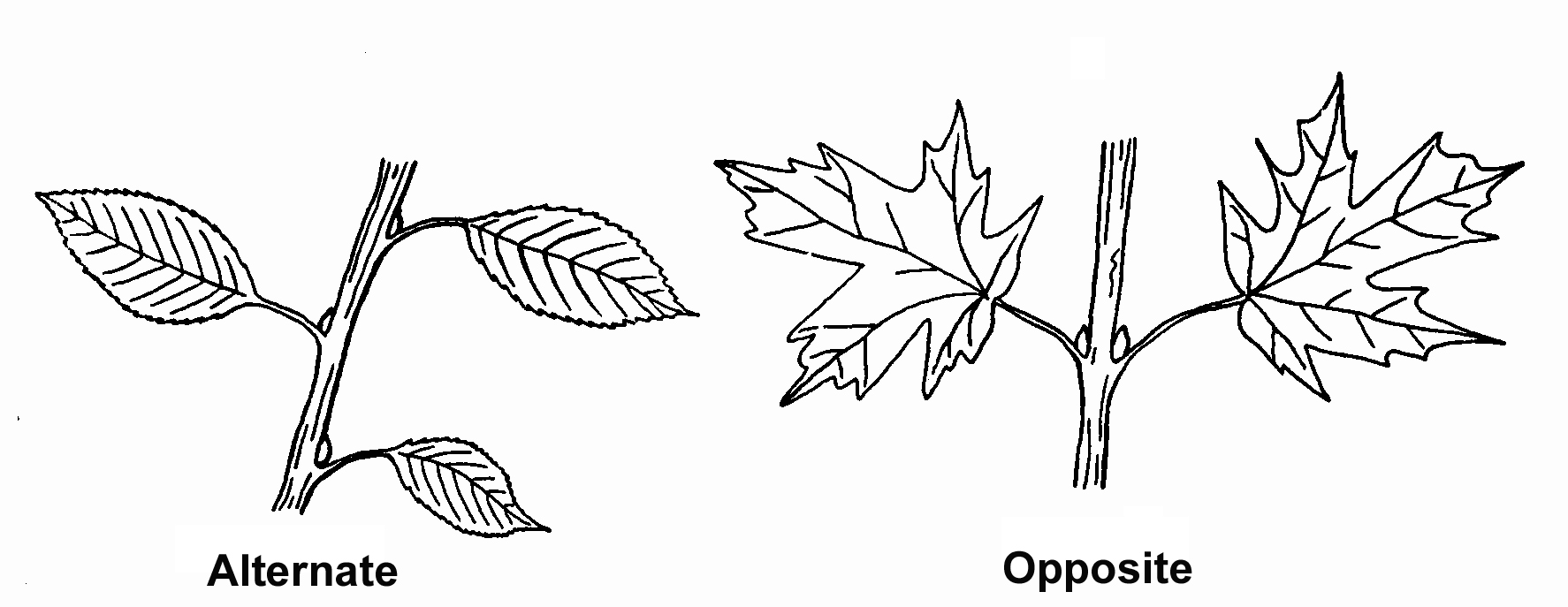
Keep an Eye out for These Natives!
Opposite Branching Species
Big-leaf Maple
Acer macrophyllum
- Multiple terminal buds with the largest in the middle
- “V” shaped leaf scar
- Mature trees are typically covered in moss
Red Elderberry
Sambucus racemosa
- Very large buds, which are bright pink and green in the spring
- Raised lenticels give bark a warty appearance
- Spongy pith
- Can grow to 20 feet tall at maturity
Snowberry
Symphoricarpos albus
- Brittle whispy branches
- Tiny, opposite buds that are greyish/white in the winter
- White berries persist through winter and eventually turn black before falling off
Twinberry
Lonicera involucrata
- Light colored, shaggy bark
- Paired fruits are sometimes present through mid-winter
- Can be confused with ninebark, but ninebark has alternate branching
- New branching is square
Alternate Branching Species
Beaked Hazelnut
Corylus cornuta
- Twigs have small white hairs and appear fuzzy if you look closely
- 2-toned pinkish buds
- Prominent zig-zag pattern along the twig, bending at the nodes
Black Cottonwood
Populus balsamifera
- Young shoots have angled edges
- Tawny bark color
- Large, white, visible lenticels
- Sticky buds
- Spear-shaped lateral buds
Hardhack
Spirea douglasii
- Grows in thickets
- Buds are very small with white hairs
- Subalternate buds
- Persistent flower heads
Indian Plum
Oemleria cerasiformis
- Loose branching growth habit
- Bud scales are shingled and green-purple. Sometimes described as “artichoke-like”
- Light-colored, visible lenticels
- First to lose leaves in winter, first to leaf out in spring
Pacific Ninebark
Pysocarpus capitatus
- Striped, shaggy bark
- Twigs have edges that you can feel if you roll in your hand
- Branches are “whip” shaped
- Buds are appressed (pressed at side of twig)
Red Alder
Alnus rubra
- Bark is smooth and often covered with white splotchy lichen
- Buds are bright red
- Persistent cones called strobiles (female)
- Non-persistent catkins (male)
- Can grow up to 120 feet at maturity



